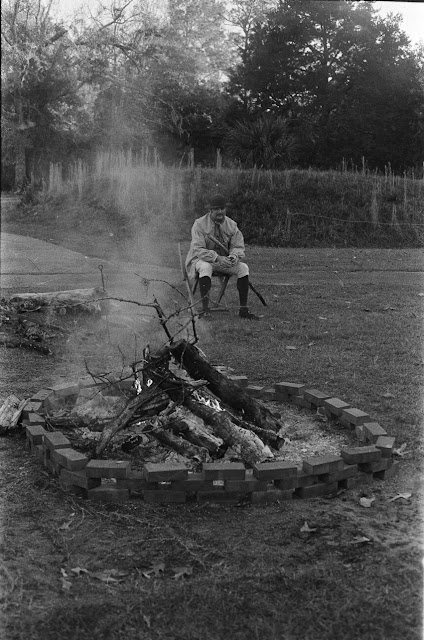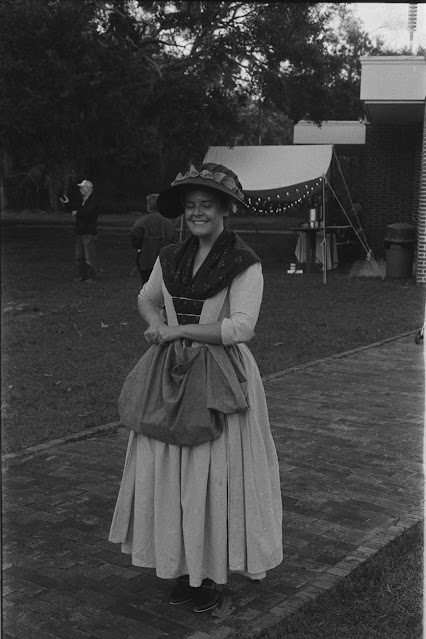This is my first attempt at an organized, thought-out photo project, and I’m super excited to dive into it. To understand this, you’ve got to understand that I’m a Disney Geek. My family went to Disney when I was growing up quite a few times. My parents took the Lovely and Talented Lisa and I to Disney World as a graduation from college present. Lisa and I have taken John as often as we could, and have instilled a love of Disney in him as well. Disney to me is all wrapped up in the best aspects of nostalgia, but at the same time the fun of it still comes from its constant change as they push the boundaries of what is possible in immersive entertainment. But that’s getting away from the point, I was talking nostalgia.
I remember most of the trips we took to Disney well, some less well, and one not at all, because I was not quite two. Some of what has kept these earlier memories so vibrant is the photos my dad captured along the way. I have my dad to thank for much of my love for photography. He always had a camera, and he had it out at not just the “special” times, the birthdays and holidays and vacations, but at the regular times. Looking back on those photos, the ones of just random weekend car rides and everyday stuff mean the most. Most of our life is not holidays and vacations, right? He definitely took the camera on vacation, too, but he took his “regular times” eye with him, I think. There are posed photos in front of things that represent where we were of course, but there are also others that just seem kind of random. And I love them.
Dad shot on slide film and those early slides of our earliest trips to Walt Disney World have come under my care. I’ve scanned them all, but still have a screen and projector that, as far as I know, still work. The look of slide film, and I think this was specifically Kodachrome, just says “childhood memory” to me. I went looking through these old Disney photos when we decided to make a trip for Walt Disney World’s 50th birthday. I gift to thinking how different it looked then, but at the same time how much the same. Nostalgia and Progress were in those images.
I got to thinking it might be cool to try to recreate some of those photos, to go to the same places and seek the same angles and framing and see that mix of nostalgia and progress. But I didn’t want to step in too much as the photographer. I think that taking those photos with a modern DSLR would be just jarring, and probably say more about the change in technology over the last 50 years than the story of nostalgia and progress I’m trying to tell. So I bought a 35mm slr film camera that was made in the mid to late 60s, something that might very well have been carried by the tourists during those first years. I can’t get my hands on Kodachrome any longer, it’s not been made in over a decade, but Kodak did re-release another slide film. It’s not the same look, but slide film is distinct from negative film and I thought this would get me closest.
I’ve gathered 15 images from dad’s collection, only two of which feature me or my mom. They are scenic shots, and some of them a bit random. I asked my dad why he was taking photos of the rest rooms on Tom Sawyer Island and he said he had no idea. But he did, and so will I. I’ve chosen images of places I am fairly certain I can get to and put myself in the same spot as dad. I’ve checked Google Earth and pinpointed as best I can where he was standing. I feel like I’m ready.
 |
| A truly epic view of the restrooms on Tom Sawyer Island, from, I think, the fort. |
 |
| That’s me in the red overalls and yellow shirt. I may have someone else shoot this and try to ride that horse again. |
I began this thinking it was a tribute to Walt Disney World. But the more I look at these photos and the more I think about it, the more it becomes a tribute to my dad. Thinking about him walking around the Magic Kingdom with my mom and little me, camera swinging on his neck, shooting things that struck him reminds me of just how much he has given to me. And when I think that just a few years before he was walking around the jungles of Southeast Asia armed with much more than a camera, well, I just hope that someday I can grow into the kind of man he is.
I hope this works out like I’m envisioning it. It’s a little squirrelly working on film and not knowing until you get photos back from a processor what you’ve captured. But I have high hopes. I mean, it’s Walt Disney World, it’s the Magic Kingdom. I feel like Walt would approve.
 |
| One big difference will be the missing Sky Ride. |
 |
| Pinocchio Village Haus doesn’t really look any different today |

































